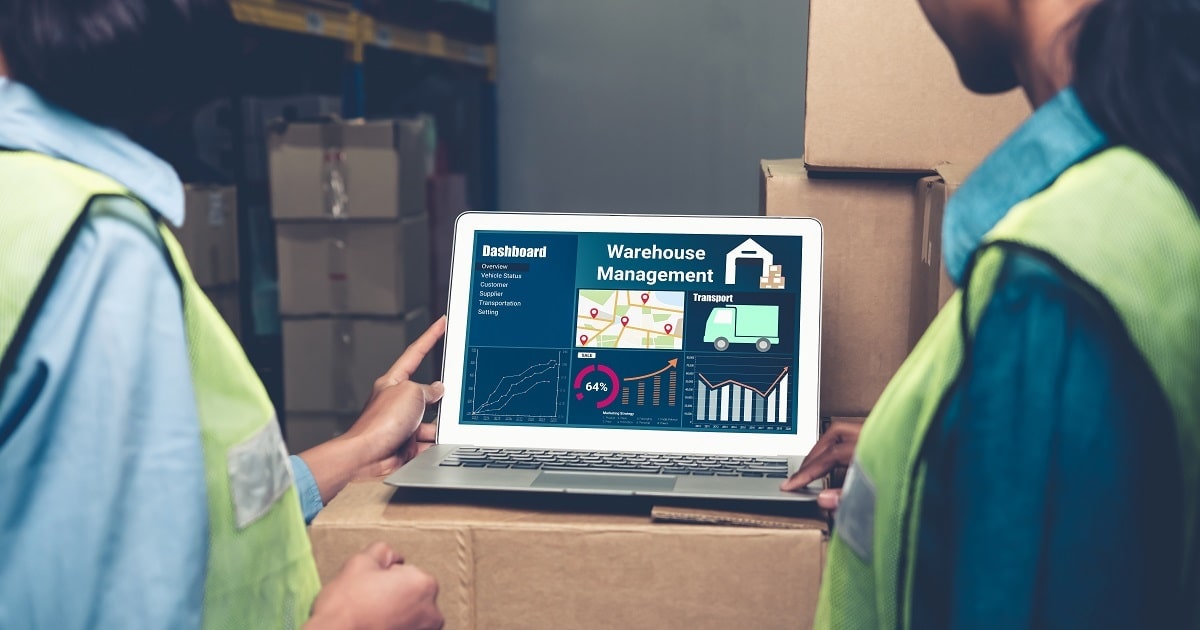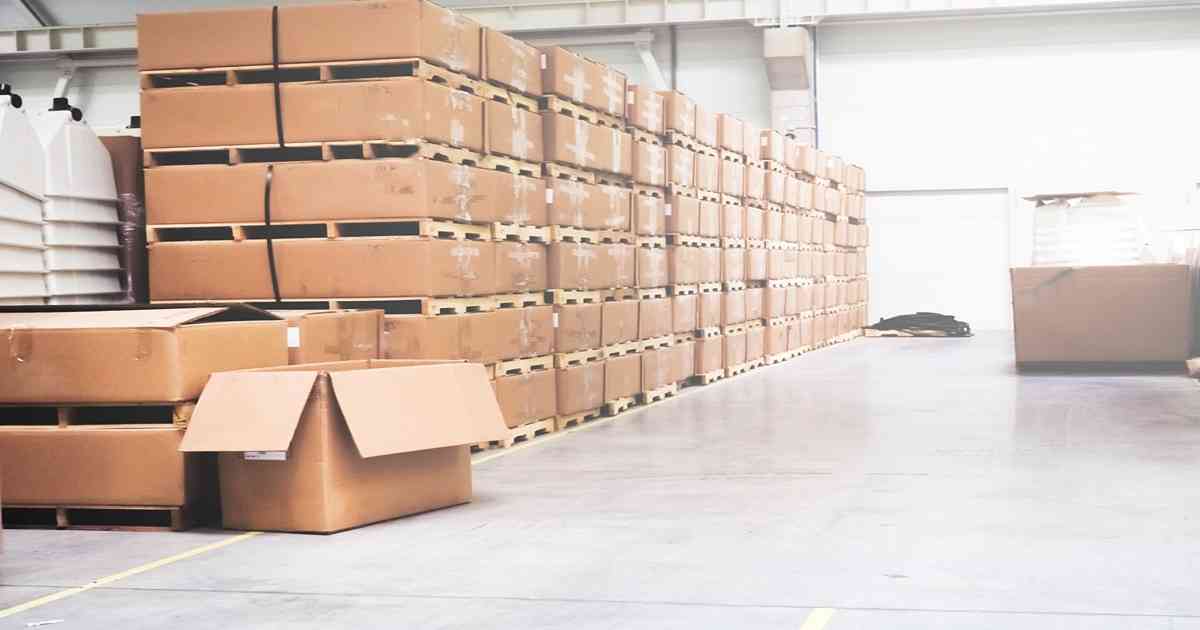
Warehousing and Distribution
Article | June 16, 2023
Supply chain is the backbone of any business. Since there is a supply chain in existence, you can buy whatever product you want. The supply chain is evolving since the Industrial Revolution, and it is still changing, and the evolution journey is fascinating. Before moving forward with the article, first, let's understand supply chain and supply chain management.
What is a Supply Chain?
A supply chain is an entire process of producing and selling commercial goods, beginning with the procurement of raw materials and ending with the distribution and sale of the goods. The supply chain ensures that a product is available in the right place, at the right time, and the lowest possible cost while ensuring the product quality. The supply chain aims to provide the maximum value to the customer at the minimum likely costs. The supply chain is the single most significant expense for businesses, and it provides them with a tremendous opportunity to improve and increase savings and profit margins. The price of most products is competitive in the market, but the supply chain determines the product's profit margin. The demand for products and services fluctuates for various reasons, and meeting this fluctuating demand with a higher degree of quality requires knowledge of supply chain management. Effective supply chain management is essential for any business to compete in the market.
What is Supply Chain Management?
Supply chain management is an essential factor in a business's long-term success. The management of how goods and services evolve from raw materials to products sold to consumers is known as supply chain management. It includes the processes of transporting and storing raw materials, storing finished goods until they sell, and tracking where sold goods go so that you can use the data to boost future sales. Supply Chain Management includes all aspects of business activities, including logistics, purchasing, and information technology. Materials, finances, suppliers, manufacturing plants, wholesalers, retailers, and consumers are all combined into a single system. A business with a well-managed supply chain can significantly reduce all operating costs associated with that chain, resulting in higher profits. The main goal of effective supply chain management is to increase profitability by improving customer satisfaction and reducing business costs. Profits improve as expenses are in control and reduced when possible. When the costs of purchasing raw materials and manufacturing goods drop, the operating costs also decrease.
Challenges in Supply Chain Management
There are many challenges related to supply chain management. In this section, we will focus on some of the most significant supply chain management challenges.
• Visibility: It is a significant issue in supply chain management. Businesses are unable to track all international cargo. The majority of data on the ocean or air shipments is often unavailable. Between 2008 and 2016, an average of 600 containers lost at sea (it does not include catastrophic incidents). These figures are concerning because the amount of cargo shipped over time is rapidly rising.
• Uncertainty: Uncertainty has been difficult in supply chain management. Demand planning is essential because many businesses have massive amounts of leftovers. If it is perishable, it is thrown away. There is a lot of waste, and it's all because of bad planning. In addition, initial raw materials may be unreliable, or lead time may be unpredictable. It isn't easy to be confident of any part of the supply chain, mainly because it is an extensive system.
• Customer Service: Supply chain management is all about getting the right product to the correct location at the right time. It seems easy at first, but it can quickly become complicated.
• Cost Management: Increasing energy/fuel and freight costs, a more significant number of global customers, technology, rising labor wages, new regulations, and rising commodity prices all strain operating costs.
• Planning and Risk Management: Annual reviews and redesigns are needed to be efficient and effective. These changes are in reaction to market changes, such as new product releases, global sourcing, credit availability, and the need to protect intellectual property. To monitor and minimize these threats, they must be identified and quantified.
• Supplier/Partner Relationship Management: It is crucial to create, understand, and follow mutually agreed standards to understand current performance and areas for improvement better. Using two separate approaches to measure and communicate performance results is a waste of time and resources. Trusting the system that was in place to ensure consistency and better supplier/partner relationships is necessary.
Emerging Trends in Supply Chain
The supply chain process is continuously evolving. The emerging supply chain and logistics trends prioritize intelligent, tech-driven management to minimize operational costs and enhance efficiency. The logistics and supply chain aspect is vital for any business in supplying high-quality raw materials, ensuring an efficient manufacturing process, and tracking, shipping, and storing finished goods.
Companies that implement well-designed supply chain practices can satisfy customer needs more quickly and efficiently. This improves customer relationships and loyalty, resulting in increased revenue and the acquisition of new customers through positive word of mouth.
Let's look at some significant emerging trends that are expected to shape and develop supply chain operations in the future.
Digitization of Supply Chains
Digitization is the process of reinventing logistics operations by combining the latest technology with other physical and digital assets. Digitization allows us to better adapt to the fast-paced, highly competitive, omnichannel business environment.
Digitization increases the speed, dynamics, and resiliency of supply chain operations, resulting in improved customer responsiveness and, ultimately, increased revenue. Companies that embrace digitalization can gain genuine value, improved revenue, and market valuation.
Companies should significantly redesign their supply chain strategy to gain the full benefits of digitization. It is not enough to decorate it with digital technology.
The Internet of Things (IoT) occupies a significant position in digitalization as a highly transformational technology solution in the logistics sphere. The Internet of Things (IoT) is a network of interconnected computing devices that allows data to be sent over networks without human input. It assists businesses in monitoring inventory, managing warehouse stock, optimizing fleet routes, and reducing dead miles.
Artificial Intelligence
Advanced Artificial Intelligence solutions have several uses in the supply chain, particularly in the warehousing area. The procurement process involves using gesture recognition solutions instead of keyboard and mouse. It also includes self-driving vehicles, which are designed to navigate without human assistance.
In the supply chain, the concept of robotics and automation is widely implemented. The new generation of robots is easier to program, more flexible, and more affordable. Their job is to help employees with repetitive and physically challenging tasks.
Enhanced Supply Chain Visibility
Proper supply chain data analysis can significantly boost business forecasting and decision-making. It can also optimize the use of inventory management, storage, and transportation resources.
Supply chain visibility provides information on what is happening at each stage of the supply chain. It is crucial for the overall efficiency of the supply chain process, which includes sourcing, manufacturing, transportation, and delivery.
Real-time inventory management is one of the advantages of enhanced chain visibility. It uses mobile point-of-sale systems and sensors, and it elevates inventory management to a whole new level.
For example, instead of paying for purchased goods at a store, customers can take the desired products and have the products immediately charged to their credit and debit cards. Furthermore, real-time inventory management allows for the replacement of goods as they are consumed.
Circular Supply Chain
The term "linear supply chain" refers to the traditional concept where goods travel in a straight line (from raw material to finished product). Modern logistics techniques are focused on the circular supply chain idea, which involves reusing previously, used products as raw materials.
Reusing products and materials is referred to as reverse logistics, and it is a novel and innovative technique. It assists businesses in reducing administrative and transportation expenses, increasing sustainability, improving customer service and loyalty, creating value, and conserving resources.
Used products can be kept in circulation if businesses work together with their suppliers and customers.
More focus on Risk Management and Supply Chain Resiliency
Without a doubt, companies must seriously consider supply chain risk management as a means to prepare for unfavorable circumstances. The increasing use of outsourcing, offshoring, product versatility, supply chain security, and significant interdependence across the supply chain highlights the need to deal with risks in the supply chain.
However, no matter how solid the plan is, it cannot prevent errors from happening. Here's where supply chain resilience comes into play. It is an accurate indicator of a company's ability to survive disruptive circumstances.
Visibility throughout the supply chain is necessary to detect disruptions, close collaboration with suppliers and distributors so that alternative supply routes can be found, and a good incident response plan to provide a course of action when disruption occurs are all steps that are important to make the supply chain more flexible and resilient.
Use of SaaS in the Supply Chain
The software-as-a-service (SaaS) Sapproach is growing in popularity in supply chain technology and logistics management and the growth of cloud computing. This is primarily due to SaaS's security and safety and the convenience of paying for precisely the services you require. Companies can avoid the high fixed costs of system maintenance, upgrades, and infrastructure-related expenditures by using SaaS.
Supply chains are continuously evolving technology, and the diversity of employee skill sets is playing an essential role in this evolution. Organizations are becoming more conscious of changes in their market competition and continuously updating or even reinventing their market offering to maintain and develop their market positioning.
Many companies are already turning to technology to improve their supply chain operations; however, before new systems are implemented and employees are upskilled to adapt to new ways of working, existing processes must be reviewed to eliminate waste activities from the supply chain, and data must be cleansed. To meet consumer demands, supply chains must be constantly checked for efficiency improvements and aligned with corporate strategy. At present, many organizations are reviewing the length of their supply chains, intending to minimize the overall size and bring supply chains closer to the organization or the end consumer, reduce risk exposure, eliminate waste, and align with corporate strategy.
FAQ’s
• What are the three foundations of supply chain?
The three foundations of a supply chain are strategy, service, and cost. Aligning the strategy, service and cost is essential to support your company’s overall business growth and objectives. A good strategy along with good service and reduced costs helps in increasing profitability and customer satisfaction.
• What are the pillars of supply chain?
Plan, Source, Make, Deliver and Return are the pillars of supply chain.
Planning involves strategies and methods to be planned, Sourcing means procuring raw materials and other services, Making means manufacturing, Deliver means ensuring that the products reach the customers on time and Return means post delivery customer support that is associated with all kinds of returned products.
• Why supply chain management is important?
The management of how goods and services evolve from raw materials to products sold to consumers is known as supply chain management. It includes the processes of transporting and storing raw materials, storing finished goods until they sell, and tracking where sold goods go so that you can use the data to boost future sales. A business with a well-managed supply chain can significantly reduce all operating costs associated with that chain, resulting in higher profits. The main goal of effective supply chain management is to increase profitability by improving customer satisfaction and reducing business costs.
{
"@context": "https://schema.org",
"@type": "FAQPage",
"mainEntity": [{
"@type": "Question",
"name": "What are the three foundations of supply chain?",
"acceptedAnswer": {
"@type": "Answer",
"text": "The three foundations of a supply chain are strategy, service, and cost. Aligning the strategy, service and cost is essential to support your company’s overall business growth and objectives. A good strategy along with good service and reduced costs helps in increasing profitability and customer satisfaction."
}
},{
"@type": "Question",
"name": "What are the pillars of supply chain?",
"acceptedAnswer": {
"@type": "Answer",
"text": "Plan, Source, Make, Deliver and Return are the pillars of supply chain.
Planning involves strategies and methods to be planned, Sourcing means procuring raw materials and other services, Making means manufacturing, Deliver means ensuring that the products reach the customers on time and Return means post delivery customer support that is associated with all kinds of returned products."
}
},{
"@type": "Question",
"name": "Why supply chain management is important?",
"acceptedAnswer": {
"@type": "Answer",
"text": "The management of how goods and services evolve from raw materials to products sold to consumers is known as supply chain management. It includes the processes of transporting and storing raw materials, storing finished goods until they sell, and tracking where sold goods go so that you can use the data to boost future sales. A business with a well-managed supply chain can significantly reduce all operating costs associated with that chain, resulting in higher profits. The main goal of effective supply chain management is to increase profitability by improving customer satisfaction and reducing business costs."
}
}]
}
Read More

Management
Article | June 21, 2023
We track our commitments and goals quarterly through the Schneider Sustainability Impact 2018 – 2020 (formerly called the Planet & Society barometer). The 2018 – 2020 Schneider Sustainability Impact ?shows our commitments by 2020, as well as our contribution to the United Nations Sustainable Development Goals to be achieved by governments, companies, and civil society by 2030.
For nearly 15 years we have been following a clear action plan with a dashboard called Schneider Sustainability Impact. It is based on our 2050 vision with tangible deliverables updated every three years. Our CEO and CFO announce our results on a quarterly basis, together with the company’s financial results.
Read More

Warehousing and Distribution
Article | July 17, 2023
Warehouse Management System
In Supply Chain, warehouse management acts as the bridge between the supplier and customer. The warehouse facility utilized to consolidate or accumulate products and reduce the transportation cost to achieve economy. Warehouse Management System (WMS) refers to the movement and storage of materials within a warehouse. WMS is part of the Supply Chain Management and concerned with the receipt, shipping and picking of materials.
To effectively monitor the flow of products, WMS utilizes technology devices such as Barcode scanners, Bio-Metrics, and RFID to name a few. A seamless link created between the warehouse facility, order processing and logistics management till shipment. Warehouse management just not limited to the warehouse; it can also a component of Supply Chain Management (SCM) and, when done well, provides a competitive advantage to the business or organization.Supply Chain Management is the management of flow of goods and services including raw materials, work-in-process inventory and finished goods. The markets these days are transcending borders and managing the demand-supply quotient is increasingly getting complex. Production centers are setup at locations where the raw materials and labour are cheaper. Raw materials sourcing and finish goods distribution are done globally.
Supply Chain Management
Thus Supply Chain Management refers to all business processes and activities involved from the procurement of raw materials to the manufacturing and distribution of finished products. SCM in short is the art of providing the right product at the right time, place and cost. As inferred, SCM gets much wider in scope than WMS. However, WMS is perhaps the last mile in the Supply Chain Management system and any hitch in the efficacy of WMS system hampers SCM too.
Conclusion
The primary aim of Supply Chain Management is to match supply with demand. For this to work, the supply chain should be free from bottlenecks such as errant supplies, difficulty in sourcing etc. There seemed significant confusion about the phrases SCM and WMS until recently, and both frequently used interchangeably. However, it been generally accepted that warehouse management refers to the logistics of warehouse, storing, stocking, and also movement of goods. The term Supply Chain has a much broader focus involving suppliers, manufacturers and retailers.By providing customer centric operations in warehousing, companies gain competitive advantage. SCM tools help manage the supplies effectively keeping inventory at optimum levels. The efficiency of SCM relies to a large extent upon the efficiency of WMS. The SCM’s primary concern is to find out the best storage levels, which the WMS attempts to address. Therefore, it is seen that the SCM & WMS are only complementary in nature and not competing. Warehouse Management system also complements the Sales Management System by shortening the sales cycle through quick data access and delivery of quality service, every time.
Read More

Warehousing and Distribution
Article | July 17, 2023
Unlock operational efficiency and deliver exceptional customer service with a WMS. Learn how cloud-based WMS improves control, enhances customer service, and prepares businesses to develop & succeed.
Contents
1. Importance of Warehouse Management Systems
2. How Warehouse Management Systems Optimize Operations
2.1. Productivity Tracking
2.2. Inventory Control
2.3. Labor Management System
2.4. Slotting
2.5. Batching Logic
3. Essential Warehouse Operations Procedures
3.1. Inbound Logistics Process
3.2. Outbound Logistics Process
5. Conclusion
1. Importance of Warehouse Management Systems
A warehouse management system (WMS) is essential for optimizing warehouse operations and delivering exceptional customer service. There are five compelling reasons to consider implementing a WMS. Firstly, it enhances inventory control and management by reducing inventory levels, improving order fulfillment, and increasing accuracy. Secondly, it improves customer service and tracking through improved picking accuracy and automated shipment organization. Thirdly, a WMS boosts company productivity by adding warehouse efficiency and quality control to the fulfillment process. Fourthly, it provides a significant return on investment by improving sales accuracy, reducing errors, providing safe warehouse and simplifying customer support. Lastly, a good WMS integrates seamlessly with existing business management systems and adapts to evolving needs. Additionally, WMS enables businesses to meet compliance regulations through real-time data recording, enhanced business intelligence, and process automation.
2. How Warehouse Management Systems Optimize Operations
2.1. Productivity Tracking
Warehouse management systems (WMS) are crucial in optimizing operations by providing comprehensive productivity tracking tools. These systems capture and analyze key performance indicators (KPIs) such as order fulfillment rates, picking accuracy, and labor productivity. Organizations can identify bottlenecks, allocate resources effectively, and implement process improvements by tracking these metrics in real-time and generating insightful reports. With WMS productivity tracking, businesses gain a clear understanding of their operational efficiency and can make data-driven decisions to enhance overall performance.
2.2. Inventory Control
Efficient inventory control is essential for logistics warehouse management, and WMS solutions excel in this aspect. WMS provides real-time visibility into inventory levels, locations, and movements. Businesses can accurately track stock levels, monitor expiration dates, and implement automated replenishment warehouse processes. With advanced features like cycle counting and stock level alerts, WMS ensures inventory accuracy and reduces carrying costs. By optimizing inventory control, businesses can avoid stockouts, minimize excess stock, and improve order fulfillment rates, enhancing customer satisfaction.
2.3. Labor Management System
WMS incorporates a robust labor management system that enables businesses to allocate and manage their workforce effectively. These systems provide tools for labor planning, task allocation, and performance tracking. WMS optimizes labor allocation by assigning tasks based on employee skills, availability, and workload. By monitoring labor productivity and efficiency, businesses can identify opportunities for improvement and implement training programs to enhance employee
performance. With WMS labor management capabilities, organizations optimize labor costs, minimize overtime, and improve overall operational efficiency.
2.4. Slotting
Strategic slotting is a critical component of warehouse optimization, and WMS offers advanced slotting capabilities. By analyzing data on product demand, turnover rates, and order frequency, WMS determines the optimal locations for different products within the warehouse. Efficient slotting reduces travel time, minimizes congestion, and streamlines order picking. WMS enables businesses to assign appropriate storage locations based on product size, weight, and velocity. By optimizing slotting strategies, organizations can significantly enhance picking efficiency, reduce errors, and improve overall warehouse productivity.
2.5. Batching Logic
Batching logic is a key feature of WMS that enhances order-picking efficiency. WMS intelligently groups multiple orders with similar product requirements, locations, or delivery routes. By consolidating these orders into batches, the system enables batch picking, where a picker can fulfill multiple orders in a single trip through the warehouse. Batching logic reduces travel time, minimizes labor costs, and increases order picking speed. By maximizing picking efficiency, businesses can improve order fulfillment rates, reduce order cycle time, and meet customer expectations effectively.
3. Essential Warehouse Operations Procedures
A robust distribution center network serves as the backbone of operations, transforming raw materials into finished products and ensuring their timely delivery to customers. To gain a comprehensive view of logistics network and improve supply chain visibility, it's crucial to understand the distinction between inbound and outbound logistics.
3.1. Inbound Logistics Process
Inbound logistics encompasses the services required to bring materials and goods into businesses. This includes transportation, storage, and delivery processes. With the help of warehouse management systems (WMS), purchasing can be streamlined by synchronizing vendor details and inventory control levels. WMS allows efficient receipt scanning and guides warehouse staff to shelve items accurately. It also recommends optimal put-away, slotting, and storage space utilization techniques. Additionally, WMS facilitates reverse logistics by providing real-time information on product availability, enabling timely restocking and preventing stockouts.
3.2. Outbound Logistics Process
Outbound logistics focuses on the storage, transportation, and delivery systems that ensures finished products reach their final destination. WMS plays a vital role in this process as well. It enables accurate order picking through barcode or RFID scanners, reducing errors and ensuring the right products are chosen. Warehouse management processes integrated with WMS can automate product packaging, allowing for differentiation across sizes and optimizing packaging channels. Moreover, WMS simplifies printing shipping labels, price tags, logos, and other necessary documentation, eliminating manual data input and reducing human errors. WMS enhances the overall customer experience and minimizes fulfillment errors by ensuring timely delivery and notifying customers.
4. Implementing Cloud Warehouse Management Systems to improve productivity
Using a cloud-based warehouse management system offers several advantages for businesses looking to optimize their inventory control and streamline operations in complex distribution environments. Cloud supply chain management solutions provide benefits like multi-warehouse tracking, sales forecasting, and on-time delivery. Here are three key benefits of implementing a cloud WMS:
Increased control over business growth: Cloud-based WMS provides real-time visibility into inventory, allowing businesses to manage operations and make informed decisions efficiently. With automatic updates and centralized access, stakeholders can access relevant information anytime, enabling better control over business growth and flexibility to adapt to changing market demands.
Improved customer service: A cloud WMS empowers teams to track shipments, update arrival dates, and effectively manage the supply chain. It enables seamless communication and collaboration across the organization, ensuring timely deliveries and enhancing customer satisfaction. Efficiently conveying information leads to better customer service and a competitive edge.
Preparedness for upcoming changes: Cloud WMS offers an affordable and scalable warehousing solution. With cloud computing, businesses can easily adjust resources to meet fluctuating demands and seasonal changes. The ‘self-service’ access to WMS applications in the cloud allows for increased agility and quick adaptation to evolving business needs. Unlike traditional self-hosted systems, cloud WMS eliminates the need for upfront hardware investments and provides seamless scalability.
5. Conclusion
In the rapidly evolving business landscape, a warehouse management system (WMS) holds immense importance for organizations aiming to optimize their operations. As we look to the future, the role of WMS becomes even more crucial. With advancements in technology and the advent of new platforms, a cloud-based WMS offers unparalleled integration possibilities. By harnessing the power of cloud supply chain planning systems, businesses can gain better control over their inventory and navigate the complexities of modern distribution environments. The benefits are significant: increased control over business growth, improved customer service through real-time tracking, and preparedness for upcoming changes. By embracing cloud, WMS empowers businesses to stay agile, enhance productivity, and drive sustainable success in the dynamic business landscape of the future.
Read More